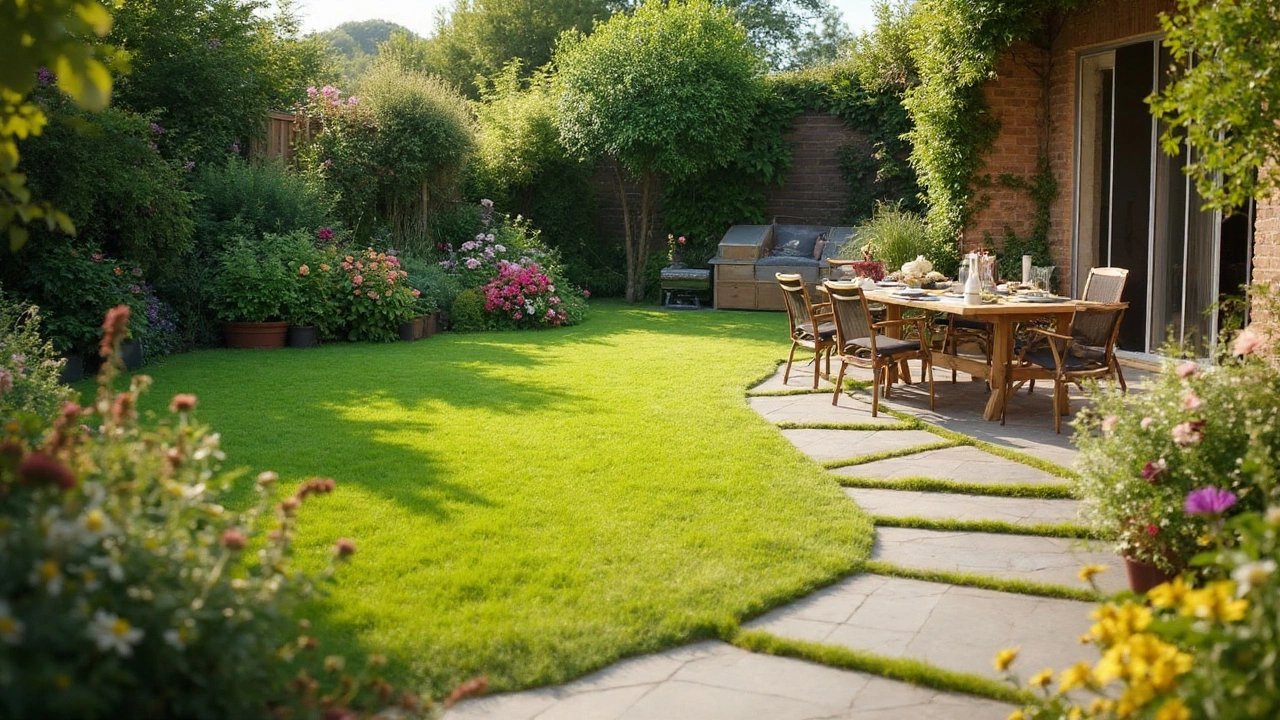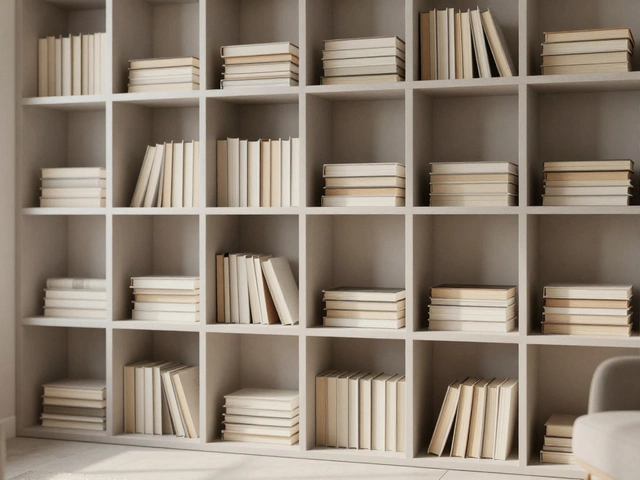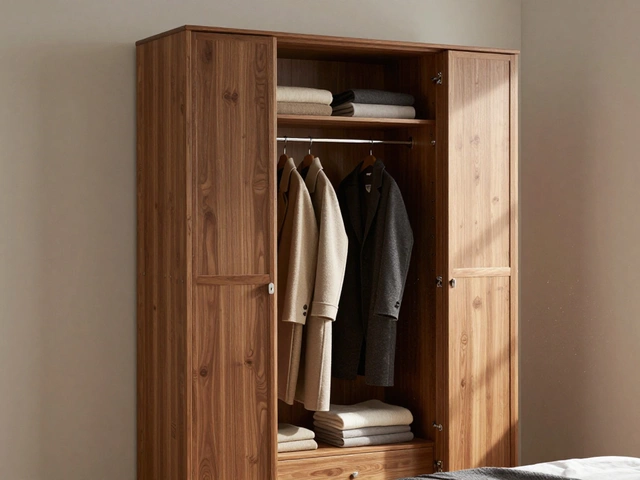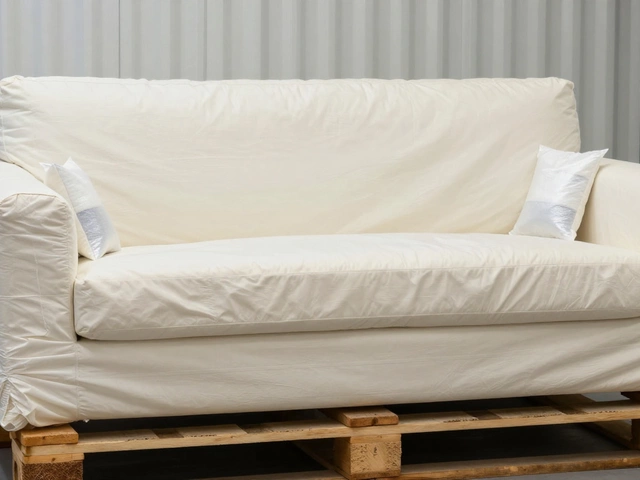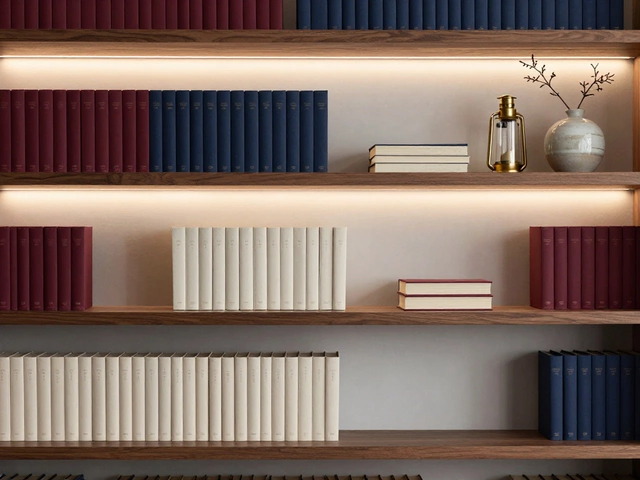Ever put your patio chairs and table right on the grass and then regretted it a week later? Maybe you noticed dead patches, sunken spots, or just ended up cursing after a surprise mud puddle. Leaving outdoor furniture directly on grass for any stretch of time is a one-way ticket to a scruffy yard. But there’s good news—a few smart fixes can keep both your grass and your lounging game in top shape.
Why Your Grass Needs Protection from Patio Furniture
Lawn furniture and grass don’t exactly make best friends. If you park your new Adirondack chair or heavy steel table on the same spot for even a week or two, you’ll notice circles or rectangles of limp, yellow, or dead grass. That’s because natural turf needs sunlight, air, and a break from constant weight. Studies found that grass loses about 30% of its growth rate in shaded or pressed-down areas compared to open ground. Plus, those legs sink if the soil is damp, turning a sweet BBQ into a muddy balancing act.
Besides the mess, the roots get compacted, limiting water flow beneath the surface. So, grass ends up stressed and more likely to get taken over by moss or weeds. If you live where the rainy season seems endless—hello, southern Ontario!—pooling water under furniture can kill patches of grass twice as fast. Not to mention all the bug magnets you can attract. Ants and grubs adore damp, sheltered soil.
Think about material, too. Metal legs can rust and stain the grass; wood absorbs moisture and can start rotting on direct earth. Even plastics can warp or get slippery if the surface underneath stays soggy. Protecting your grass isn’t just about a pretty yard. It’s about making furniture last longer and keeping outdoor spaces easy to use.
Some folks joke that grass is just nature’s carpet, but honestly, it deserves better. Investing a bit of time now can keep things green, comfy, and clean—without leaving a patchy disaster every time you move things around.
Best Materials and Methods to Cover Grass
Here’s where things get fun. Covering grass doesn’t mean you have to slab down concrete or permanently change your yard. There are quick fixes, long-term solutions, and a bunch of hacks in between—each with their own price tags and perks.
Let’s break down the best and most practical things you can use, from basic home store grabs to clever DIY setups:
- Outdoor Rugs: These come in every size, color, and thickness. Look for all-weather, UV-resistant materials like polypropylene. Good outdoor rugs allow grass some breathability. They’re mildew-resistant and can be rolled up and hosed off any time. Plus, they add a cozy vibe that’s hard to beat.
- Rubber Mats or Tiles: Gym-style mats, anti-fatigue kitchen mats, or interlocking tiles work wonders. Rubber is water-resistant, gentle on the grass, and provides a level surface for chairs. Just make sure it’s non-toxic and free of heavy metals, so you’re not leaching anything gross into your soil.
- Plywood Sheets: For a bigger gathering or temporary setup, laying down sanded plywood is a fast fix. Paint or seal the wood first so it lasts longer and doesn’t absorb water into the ground. You can build a mega picnic spot in five minutes, no tools needed. Bonus tip: toss a rug on top for style points.
- Deck Tiles: Loads of big box stores, including Canadian Tire and Home Depot, sell snap-together deck tiles. They’re usually made of weatherproof wood slats or plastic, and they’re reusable every summer. They lift the furniture up, let grass breathe a bit, and look really polished.
- Artificial Grass Mats: If you want to ‘save’ your yard for parties but love that green look, try a fake grass mat. Good ones drain quickly and look surprisingly real. They’re absolutely perfect for renters or anyone afraid of ruining the landlord’s landscaping.
- Gravel or Mulch Pads: For a year-round solution, you can edge out a permanent space with landscaping fabric, a little crushed gravel, and maybe wood chips. Gravel drains well, supports weight, but it’s tough if you love running around barefoot. Mulch is gentler but may need replenishing every spring. Just don’t go crazy or you’ll end up landscaping the whole yard!
Here’s a table comparing a few methods for quick reference:
| Material | Average Cost (CAD/sq.ft.) | Grass Friendliness | Setup/Dismantle | Portability |
|---|---|---|---|---|
| Outdoor Rug | $2-7 | High | Easy | Yes |
| Rubber Mat/Tile | $3-6 | Medium | Moderate | Yes |
| Plywood | $1-3 | Low | Easy | Yes |
| Deck Tiles | $5-10 | Medium-High | Medium | Yes |
| Artificial Grass Mat | $5-8 | High | Easy | Yes |
| Gravel/Mulch Pad | $1-4 | Permanent | Complex | No |
Notice how most of the cover options are portable? That’s a win if you change up your yard layout every season, or if you’re hosting people for just a day or two. It pays to think ahead—nothing’s worse than shelling out for something permanent you wish you could move.
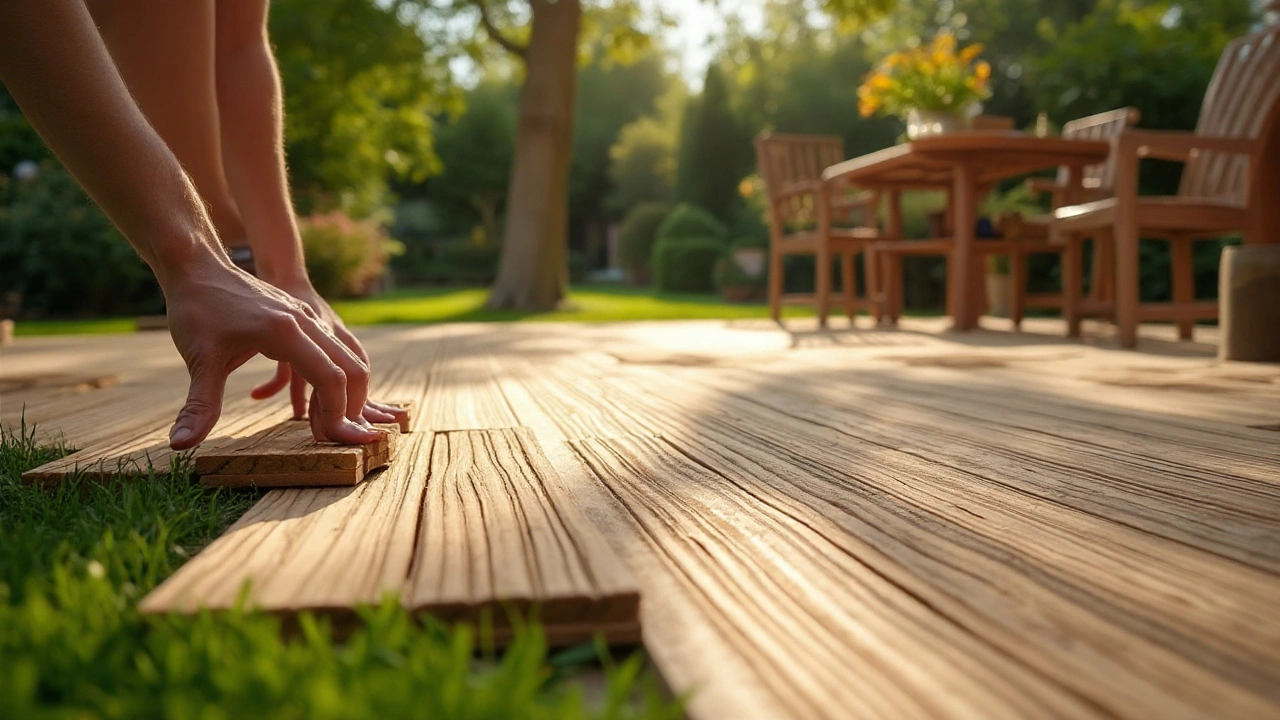
DIY Tips and Smart Tricks for Keeping Grass Healthy
If you prefer the quick-and-dirty approach, there are loads of DIY tips that help your lawn survive the next patio season. Even just moving furniture around once a week helps prevent yellowing under those chair legs. Some DIYers stick silicone caps or rubber pads onto furniture legs to spread the weight and stop legs sinking in. Plus, it saves those awkward ‘I almost toppled over’ moments when a chair leg sinks after rain.
You can also use heavy-duty cardboard as a short-term fix—great for a kid’s birthday or a last-minute party. It’s cheap, easy to cut to size, and recyclable afterward. If you’re a little handier, try building raised pallets or platforms—just two pallets from a local store, cleaned up and laid flat, make a fantastic pop-up floor.
Don’t forget about rotating! Even high-traffic parks rotate moveable benches and tables every month to help the grass recover. Why can’t you? Toss a few slabs in different spots depending on your mood or the sun’s angle. It gives grass a break and keeps your space looking fresh.
If you want a soft landing, rubber playground tiles (the kind you see at daycares and parks) can double as patio furniture bases. Thicker mats mean less pressure, so the grass bounces back faster. Plus, a little extra cushion never hurts.
Check drainage, too. If rainwater pools under your covers because of soil compaction, aerate with a garden fork or rent an aerator for a weekend. Better water flow equals surviving grass, even under the busiest patio gatherings.
Here are some quick steps to try if you want max protection with minimal fuss:
- Clean and trim the area before laying anything down. Short grass means less flattening and easier post-party recovery.
- Lay down a breathable, washable layer—outdoor rug, mat, or even old beach towels if you’re in a pinch.
- Anchor the cover at the corners with heavy pots or bricks, so wind doesn’t mess up your hard work.
- Rotate covers or furniture locations every week, or after a long event.
- After removing any cover, water and aerate the grass a little to speed up healing.
If your covers get muddy or stained, hose them down, let them dry in the sun, and you’re good for the next get-together.
Making It Work for Your Outdoor Lifestyle
There’s no one-size-fits-all answer because every backyard and every family is different. Maybe you want a low-key picnic spot for summer evenings and don’t care if a few tufts go bald. Or maybe you’re a stickler for green perfection—like that neighbor who seems to mow daily. The good thing? There’s room for both approaches.
People often worry about what’s ‘best’—the truth is, most patio furniture isn’t super heavy, but weather, foot traffic, and how often you move things play a huge part. If you’ve got pets, small kids, or wild raccoons (trust me, we get them all over Mississauga), quick-clean surfaces save your sanity. Outdoor rugs are probably the best bang for your buck if you want something you can lay down, roll away, or swap in a pinch. They’re also less likely to burn your feet on hot days—did you know some metal patio tiles can reach about 60°C (140°F) in direct August sun?
If you entertain a lot, go for the more serious deck tiles or a temporary gravel bed. These hold up to all sorts of mishaps: wine spills, dropped burgers, even the classic ‘tip your drink over while chasing a Frisbee’ move. Got a high-moisture yard? Raise your area up with pallets and add a rug. No more soggy shoes.
Here’s something else you may not think about: protecting the grass also helps you dodge bugs. Many insects thrive in damp, flattened grass or under poorly ventilated rugs. So, breathable, quick-drying covers—not cheap tarps—will keep you and your space less bug-prone.
Rally your style, habits, and local weather and pick a system that feels right. You can always swap things up next season. Nobody’s judging (except maybe your nosiest neighbor, but they probably want the same tips, too).
Grass and patios can totally play nice together if you give both a fighting chance. Keep that outdoor furniture comfy and your lawn ready for anything—be it summer dinners, birthday bashes, or just a lazy nap in the sun.

